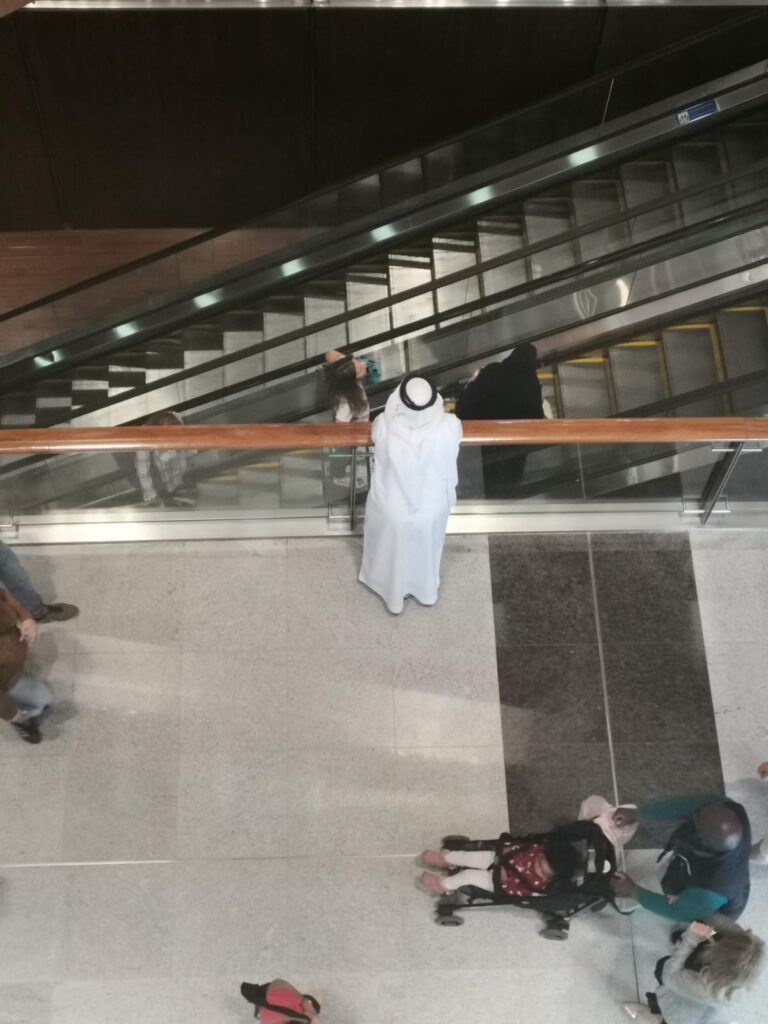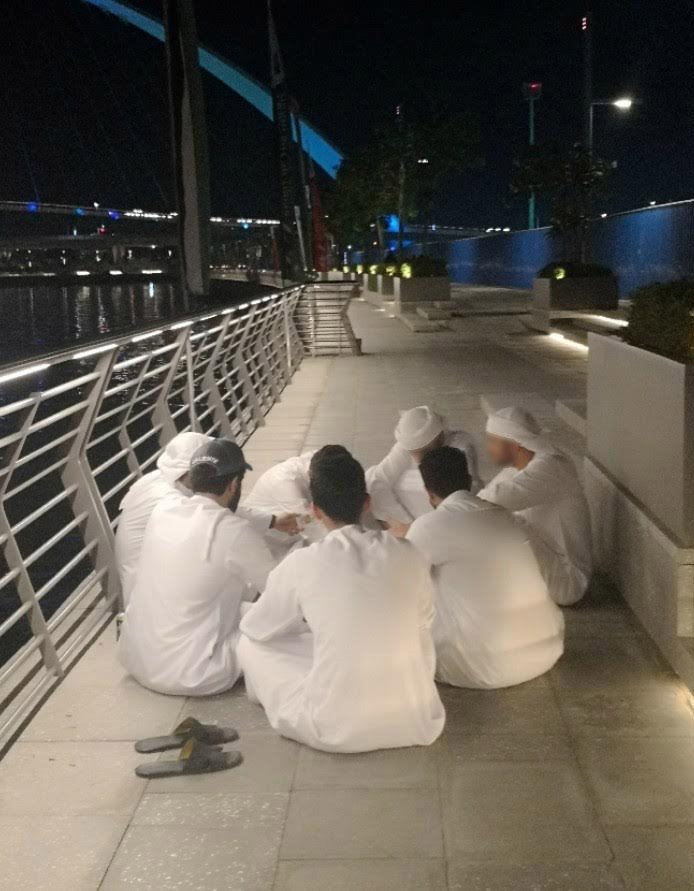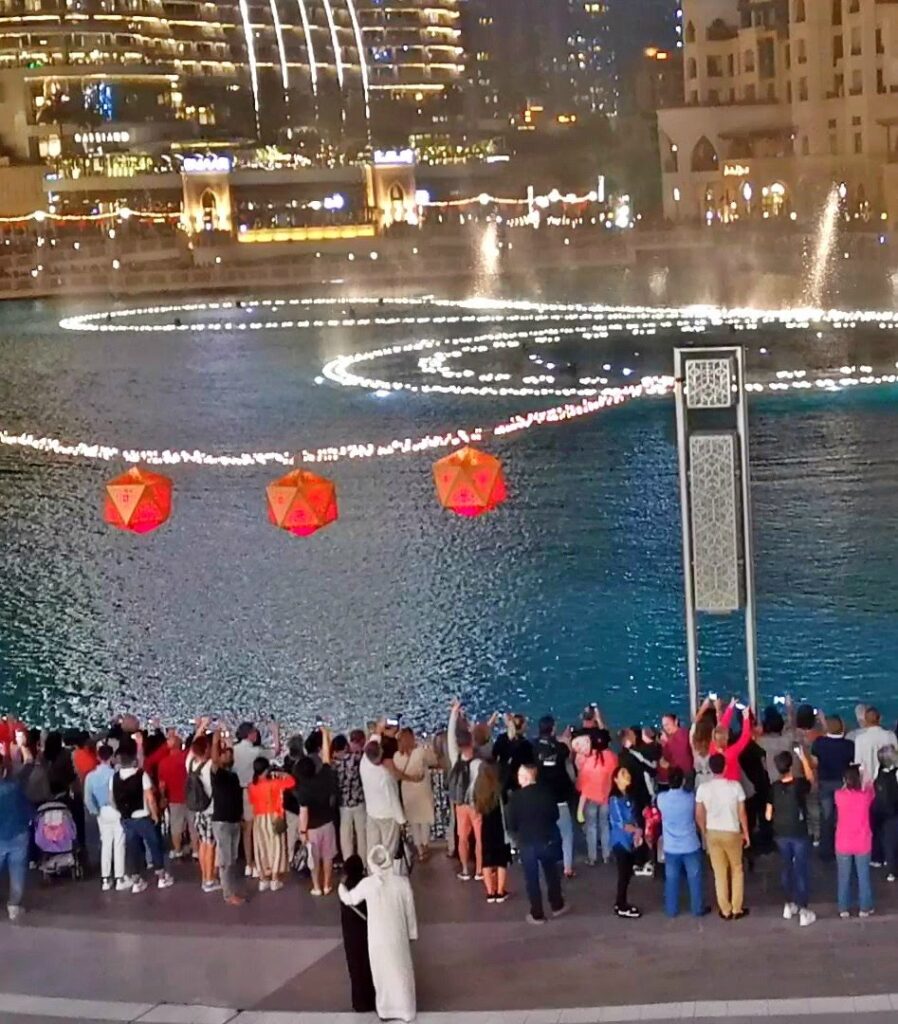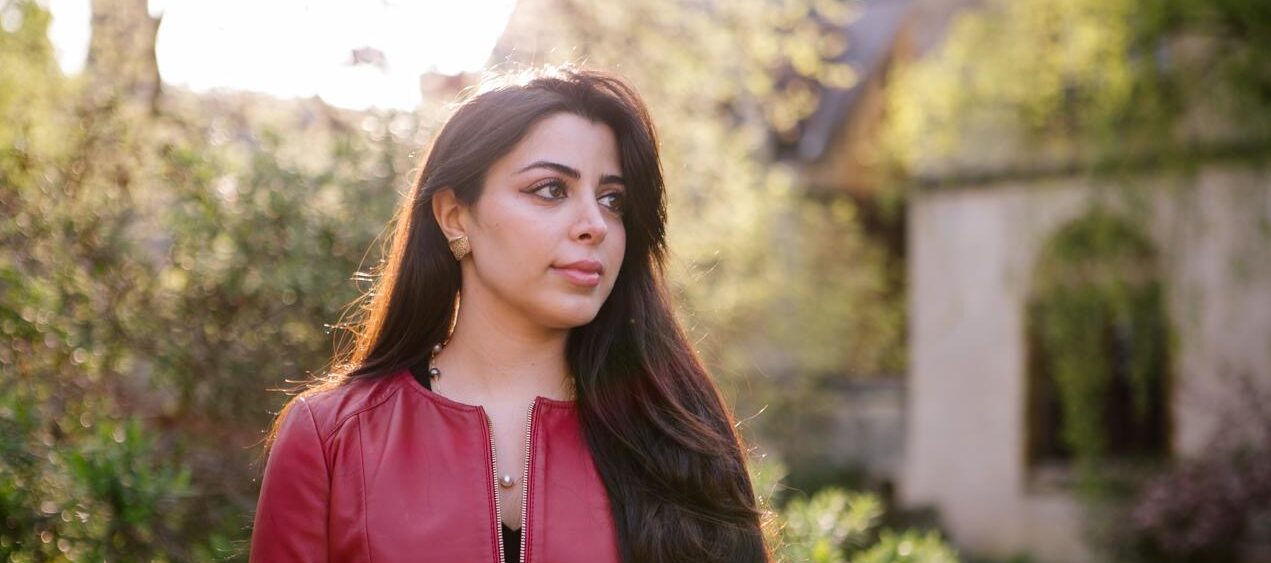‘Everyday Life in the Spectacular City’ is a photo exhibit by Dr. Rana AlMutawa conducted for her groundbreaking urban ethnography book, Everyday Life in the Spectacular City: Making home in Dubai. The book was born out of many frustrations, especially the Orientalist narratives about places like Dubai and explores how middle-class citizens and longtime residents of Dubai interact with the city's spaces to create meaningful social lives. Dr. AlMutawa shows that development projects from big malls to mega projects serve residents' evolving social needs, transforming Dubai's spectacular spaces into personally important cultural sites. Through extensive fieldwork, Dr. AlMutawa, herself an Emirati, finds a nuanced story of belonging that rejects stereotypes portraying Dubai's developments as alienating and inherently disempowering.
The 33 documentary photographs for the exhibition were taken during Dr.AlMutawa’s fieldwork from 2017-2021. The photos highlight the forms of belonging that take place in shopping malls and other so-called superficial spaces and demonstrate that inhabitants do make meanings within the spectacle.

Saira Malik (S.M.): Can you give our readers an overview of the theme for the book and exhibition “Everyday Life in the Spectacular City”?
Dr. Rana AlMutawa (R.A.M.): The book addresses three interrelated themes, “authenticity,” belonging/exclusion, and agency. When people talk about Dubai as a “superficial” city, they expect that inhabitants must be alienated there. In such narratives, inhabitants are depicted almost as victims in cities changing beyond their consent, lacking in agency. The book addresses these themes as well as many subthemes under them, such as cosmopolitanism, social hierarchies, and inequality.
The idea that Dubai is “inauthentic” has various roots. One of them is Orientalism. For instance, Dubai’s critics may point to the large, new developments as spectacles; however, when they go to Europe, they are in awe of the spectacles there—large palaces and churches, for example—and view them as examples of these countries’ rich histories and cultures. These were spectacles built for similar reasons as those in Dubai, such as to showcase wealth and power. Similarly, some critique Dubai for not being “Middle Eastern” or “Islamic” enough, viewing it as too modern and globalized. While they criticize it for being too modern (and therefore inauthentic), they also criticize it for not being modern enough. They claim that its modernity is a “fake” modernity, that “real” modernity is in the West, in “real” global cities or cosmopolitan cities such as New York or London.
Some academics, artists, and others I label as the “creative class” push back against these Orientalist authenticity debates, yet they may engage in problematic binaries of fake/authentic themselves. Practices of social distinction are evident; for example, when the creative classes critique the “glitzy” city for being too “inauthentic,” and the people who enjoy this part of the city to be superficial. These binaries often exoticize and fetishize the older and poorer parts of the city and dismiss the newer and “glitzy” parts of the city as meaningless spaces.
This was why it was important for me to highlight the forms of belonging that take place in shopping malls: to demonstrate that inhabitants do make meanings within the spectacle. These “superficial” places are important cultural sites: ones where people go to see and to be seen by members of their community; where people have memories from their childhoods; and where social and gender norms are observed and negotiated. For instance, the colored abaya was seen as taboo for women at a certain point a few years ago, but it has become more and more normalized over time, partially because they were seen being worn in places such as malls.
Inhabitants making meanings within the spectacle is a form of agency. The literature often presents acts of resistance as the only legitimate form of agency. Feminist scholars such as Saba Mahmood pushed back against these narratives in feminist discourse. Similarly, inhabitants may feel alienated by the rapid changes in the city, but that is not their only relationship to the city. For instance, some interviewees I spoke with critiqued new developments in the city as being too Western and too foreign, saying they feel they do not belong in their own country when they are in these places. But at other times, they go there because they like feeling anonymous; because they like feeling that they are “not in Dubai anymore;” or because it reminds them of “being in Europe.” People have very complex relationships towards the city that cannot be understood simply through supportive/oppressed/resistance narratives. Rather, inhabitants make meanings even in places they may not favor, and that is a form of agency.


(S.M.): What was the initial spark which drew you to this subject?
(R.A.M.): The book was born out of many frustrations—I was frustrated by the Orientalist narratives about places like Dubai, especially because I found these narratives much more subtle than the common Orientalist discourse which is easier to spot and critique. For instance, given that the Gulf states are relatively wealthy, it was as if it was “appropriate” to engage in Orientalist narratives about them in ways that are by now unacceptable for other places. I was also frustrated by the practices of social distinction that manifested in conversations about places like Dubai, wherein some individuals showcase their disdain for the city as a way to present themselves as more socially and politically aware as opposed to the supposedly more “superficial masses.”
I was angry at the way that inhabitants of so-called illiberal cities were depicted mostly as alienated victims seeing their cities changing without their consent, rather than ordinary people— who you could find in any other place—making do and adapting to their environments, sometimes because they have to, but also making meaningful experiences, connections, and relationships within this environment. Finally, I was frustrated by the ways that the academic literature depicted inhabitants to only have meaningful interactions with their city when they were somehow engaged in at least subtle acts of resistance towards the spectacle, or rejecting it somehow. These narratives privilege resistance as the only form of agency and depict individuals who do not appear to resist almost as brainwashed, lacking in deep engagement, as “superficial.”
It is also not uncommon to find journalistic and academic accounts labelling Gulf cities, particularly their so-called glitzy spaces (such as shopping malls and new developments) as superficial and alienating. Some of these narratives implicitly or explicitly seek to uncover the “real” city that lies beneath the veneer of the spectacle. In doing so, they advance a problematic binary discourse about supposedly “authentic, local” spaces contrasted with alienating, “tourist” spaces. I address the question of who gets included and marginalized from these shopping malls and new developments, while also arguing that these places should not be dismissed as “non-places,” neatly separated from the everyday lives of inhabitants. I show how inhabitants re-appropriate these places as significant cultural sites; create a sense of belonging within them; and negotiate, perform, and challenge social norms in these spaces—while also demonstrating that belonging is often built on exclusions based on race, class, and a variety of other factors.
(S.M.): Can you elaborate on your methodology during the early stages of the project and how it evolved?
(R.A.M.): My research was an urban ethnography which involved being part of the community – usually anthropologists travel to a country they don’t know and immerse themselves in a community they’re not part of. In my case, I was already part of this community, which allowed me to see things that perhaps people who were spending less time wouldn’t be able to see (such as when an interviewee gave me a certain answer, but in their everyday life practised things differently than what they said – which showed how complex their feelings about the city and its changes are). Aside from interviewing over 100 Emiratis and non-Emiratis who grew up in Dubai, I also walked around the city, took fieldnotes, and took photos.
(S.M.): How did you come to rely on photography as an ethnographic method?
(R.A.M.): I found that it depicted things in ways that words could not. For example, I could talk about how inhabitants were making meanings in malls and re-appropriating them in ways to serve their needs and to socialize, but a picture of young girls dancing in the mall or older men gathered in a coffee shop and using it like a majlis are more evocative than words alone.

(S.M.): Were there specific challenges or discoveries that prompted adjustments in your approach during the fieldwork from 2017-2021?
(R.A.M.): As a privileged Emirati woman doing an ethnography about middle- and upper-middle class citizens and residents, I recognize that what I present in this book is not representative of how many of Dubai’s inhabitants encounter the spectacular city. Both my citizen and non-citizen interlocutors generally lead relatively privileged lives, meaning that not only my voice, but the voices I am reporting on, represent a specific segment of society. To augment limitations of my approach, I supplemented my work with existing literature focused on other populations and the structural inequalities they face, which helped me to demonstrate that with inclusion there is often also exclusion taking place.
Writing about my own society, my subjectivity and many of my biases may be clear to my readers (as opposed to non-Emirati academics writing about the UAE who may be viewed as more neutral). My positionality as I write this book reflects this location, as I am privileged in the UAE, albeit also part of a minority as an Emirati, but not necessarily in the Western academic world where there is a serious under-representation of Emirati scholars writing about their own societies. I’ve had questions from non-citizens about my positionality concerning researching non-citizens, which made me wonder whether the same questions are asked of non-citizens (including those in the Western academy) writing about Emiratis. As I wrote in my book, I suspect that oftentimes, they are not, based on the literature on this topic.
(S.M.): How have you brought a personal and scholarly perspective to this discourse?
(R.A.M.): My positionality provides me with both opportunities and limitations, something I refer to throughout my research. One of the opportunities is that I am able to reflect on how my interlocutors experience the city and its changes in ways that are not commonly conveyed in academia. For instance, interviews with middle-aged Khaleeji men and women, as well as the discourse in Arabic newspapers in the Gulf, provides some academics with the perception that these individuals feel marginalized amid the large presence of non-citizens in the country. This is very true. Yet in daily life, we can see contradictions. Some of the very people who criticize the loss of “cultures and traditions” due to the influx of foreigners boast about Dubai’s multinationalism and how it has made them more “open-minded” in other circumstances. These nuances are lost when interview responses or discourses in newspapers are used to report on people’s stated experiences without deeper research into people’s daily realities.
(S.M.): What role do you hope your photographs will play in sparking conversations both within the community and in the broader social and cultural context?
(R.A.M.): It is not only Western academics who use these (implicit or explicit) labels of fake/authentic. Some of these perceptions of authenticity circulate among inhabitants as well, producing essentialized understandings of culture, in addition to delegitimizing other forms of knowledge. In my work, I quote Reem al-Kamali, an Emirati journalist who wrote an ode to a neighbourhood shopping centre in Dubai, which she describes as a “community space” where some Emiratis congregate daily. A few months later, al-Kamali posted a tweet about an Arab researcher who came to the United Arab Emirates to research its society, and who used the mall as a field site. He did not find Emiratis there and decided to quit his research and leave. Al-Kamali criticized him for searching for a culture in a shopping mall, advising that to understand a society and culture, one needs to frequent museums or research centres instead.
There are many issues to unpack here, such as the implicit assumptions that only citizens can constitute part of the social fabric of a country. Through this lens, globalized places such as shopping malls (or citizens who may appear to be “Westernized”) are often not considered legitimate or “authentic” enough. Al-Kamali, despite writing about the shopping mall as an important social space, also depicted the mall as a culturally irrelevant place when compared to museums and cultural centres, the latter supposedly more legitimate sources of knowledge and culture. Such divisions of fake/authentic are not uncommon, and they may lead us to neglect how certain places are also important sites of belonging, socializing, social contestation, and attachment for many inhabitants. By exploring these realities, I hope to go beyond this overplayed binary.
The photo exhibit ‘Everyday Life in the Spectacular City’ is currently being displayed at Kutubna Cultural Center until July 4, 2024. For more information about Dr. Rana AlMutawa, visit www.ranaalmutawa.com







